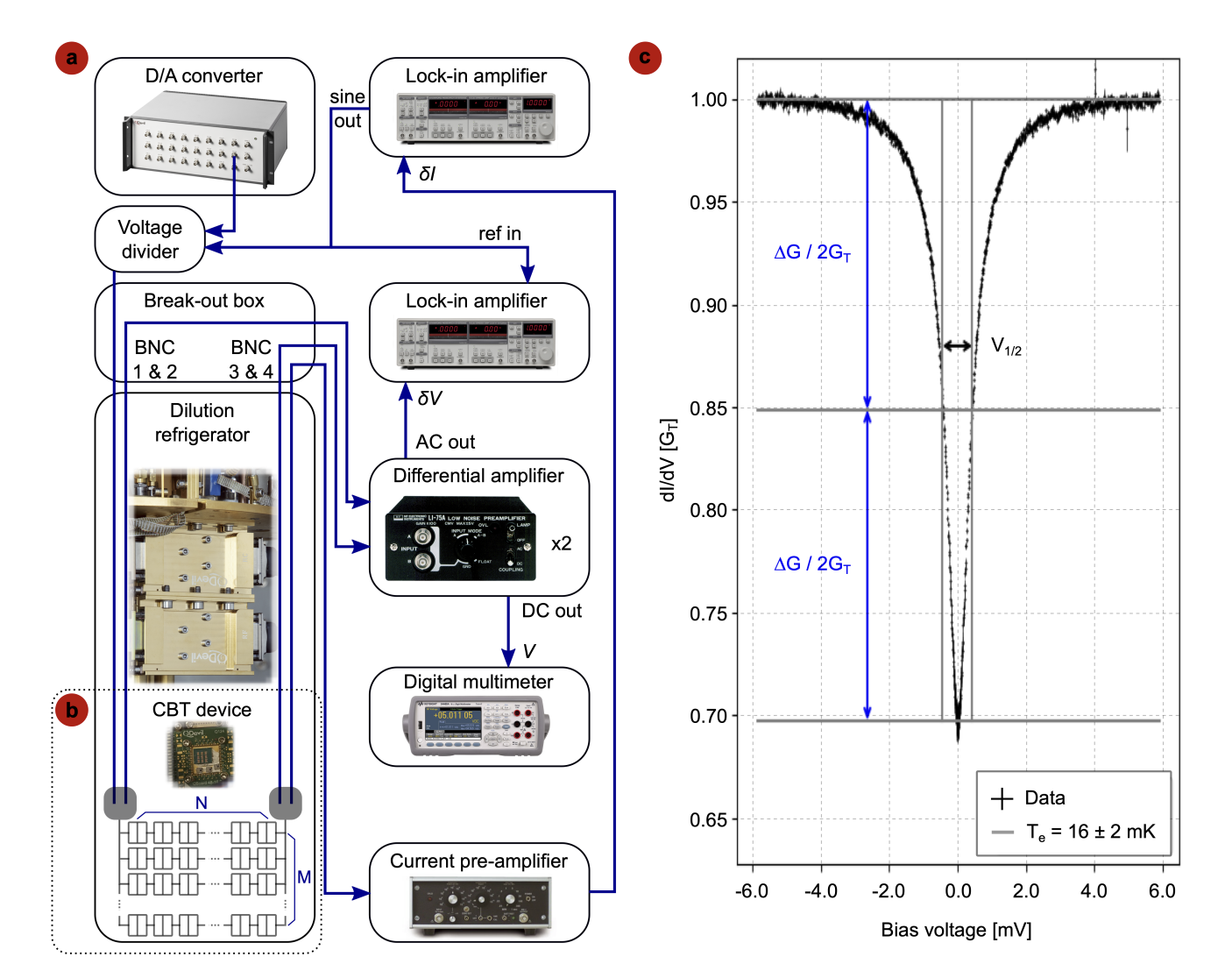Quantum science and technology development require cryogenic experiments, as low temperatures are crucial for the emergence of many quantum properties. However, determining effective electron temperature can be challenging due to noise levels, low thermal conductivities, and long equilibration times.
Researchers have addressed this by using metallic Coulomb blockade thermometers (CBTs) and superconductor-insulator-normal metal (SIN) junctions as thermometers in a cryogen-free dilution refrigerator. They also analyzed the effect of QDevil’s cryogenic filters, finding that they significantly reduce noise and electron temperature. This research is significant for applications requiring low electron temperature and low noise levels in low-frequency control wires.
What is the Importance of Low-Temperature Benchmarking of Qubit Control Wires?
The study of quantum science and the development of quantum technologies require cryogenic experiments. These experiments are essential because a low electron, phonon, or photon temperature is crucial for the emergence of many quantum properties and for the performance of associated quantum technologies. Laboratories routinely generate phonon temperatures of the order of 10 millikelvin using dilution refrigerators. However, determining other relevant temperatures in an experiment, such as effective electron temperature, can be challenging for several reasons.
Noise levels may exceed the thermal energy, low-temperature thermal conductivities are generally low, resulting in inhomogeneous and time-dependent temperatures due to variations in local dissipation or local heat loads. Different physical subsystems such as conduction electrons, nuclear spins, phonons, electromagnetic modes in the microwave regime, magnetic excitations, etc., may thermally decouple, resulting in long equilibration times. The intrinsic heat leak arising from the ortho-para conversion of hydrogen molecules in the cryostats copper structures, for instance, may take weeks.
In particular, the coupling between conduction electrons and phonons vanishes at low temperatures, resulting in two subsystems that are generally out of mutual equilibrium and must be characterized individually by their own effective temperatures.
How is Low-Temperature Benchmarking Achieved?
Minimizing electron temperatures in a dilution refrigerator requires nontrivial thermal anchoring of the signal wires as well as careful low-pass filtering to reduce the thermal effects of noise over a large bandwidth (tens of GHz). Furthermore, the resulting temperatures of phonons and electrons in a sample holder must be established separately and generally require different techniques.
In this study, the researchers addressed the challenge of determining the effective electron temperature of low-frequency control wires inside a cryogen-free dilition refrigerator by using metallic Coulomb blockade thermometers (CBTs) and by comparing this technique to the use of superconductor-insulator-normal metal (SIN) junctions as thermometers.
For a particular cryostat configuration with the samples loaded via a bottom-loading mechanism onto the coldfinger inside a vector magnet, the researchers determined an electron temperature of 22 ± 1 mK with the CBT method and 27 ± 1 mK with the SIN method. The temperature of the sample holder itself, measured resistively via a calibrated ruthenium oxide (RuO2) thermometer, was indicated at 14 mK.
What is the Role of QDevil’s Cryogenic Filters?
The researchers also analyzed the effect of QDevil’s cryogenic filters compared to unfiltered reference wires. The comparison of signal lines with QDevil’s QFilter to unfiltered signal lines demonstrated that the filter significantly reduces both the root mean square (rms) noise and electron temperature, which is measured to be 22 ± 1 mK.
This finding is significant for those wishing to test cryogenic setups for the use of qubit control or other applications where low electron temperature and low noise levels in low-frequency control wires are important.
What is a Coulomb Blockade Thermometer (CBT)?
A CBT is a primary thermometer designed to be insensitive to environmental influences, including variations in external magnetic fields, offset-charging effects, and fabrication errors. This method was first introduced in the 1990s and has been further refined over the years.
The CBT consists of arrays of metallic islands separated by tunnel junctions. The thermometer operates in the regime where the charging energy of the islands, determined by each island’s total capacitance, is of the order of or smaller than the thermal energy. Under such circumstances, the differential conductance is expected to show a universal dip around zero voltage bias.
How is the Electron Temperature Determined?
In the appropriate operating regime, the relative shape of the conductance dip depends exclusively on well-known physical constants and the electron temperature. The researchers used a four-probe setup for differential conductance measurement of a CBT device inside a dilution refrigerator.
The measured differential conductance around zero bias of a CBT device with N = 100 and M = 10 showed the characteristic dip as a function of bias voltage, which depends only on well-known physical constants and the electron temperature. The researchers extracted the electron temperature to be 16.2 mK using this method.
Publication details: “Low-temperature benchmarking of qubit control wires by primary electron
thermometry”
Publication Date: 2024-03-26
Authors: E. Hansen, Ferdinand Kuemmeth and Joost van der Heijden
Source: arXiv (Cornell University)
DOI: https://doi.org/10.48550/arxiv.2403.17720

